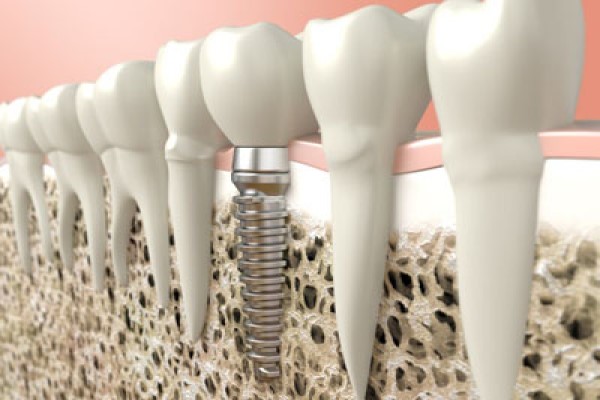What to Expect During Bone Grafting

Bone grafting is a process that involves placing new bone in your jawbone. There are several reasons why you might want to have this type of procedure. After gum disease, you might need bone grafting to replace the missing bone. If you want dental implants, you may need extra bone in your jaw to support the implants. Read on to learn more about this process.
How bone grafting works
During the bone grafting procedure, the dentist will make an incision and fold back part of the gum tissue. If there was gum disease, the dentist will clean out any infected tissue. Then the dentist will place the bone grafting material in the area. This material will work with the jawbone and build new bone too.
After gum disease, bone grafting can boost the chances of a patient keeping their teeth. For dental implants, bone grafting can provide a strong support for the new tooth. The bone grafting material will usually come from another part of the patient’s body. This is often the hip bone, although it can come from the soft palate too.
Sometimes, patients receive artificial bone instead. Regardless of the type of bone used, it will take several months to heal. The new bone growth can replace the grafting material. Some patients will only need minor bone grafting. If this is the case, then it can be done at the same time as the dental implant process.
Types of bone grafts
There are many types of materials available for bone grafting. The type of material used will determine the type of graft it is. The dentist can explain the advantages of each different type of material. A graft from a patient’s body is known as an autograft. The other types of implants can include:
- Allograft: this type of bone graft comes from a human donor
- Xenograft: this type of bone graft comes from the bones of an animal. Usually, it comes from a cow
- Alloplast: this is a type of bone graft that comes from a synthetic material. Usually, this material contains phosphorus, hydroxylapatite and calcium
Tissue regeneration
After getting the bone graft, a patient’s tissue-stimulating growth proteins can encourage the body to regenerate itself. For example, a patient may be encouraged to have a guided tissue regeneration (GTR) procedure. Once the bone graft has been placed, the dentist inserts a small piece of mesh between the bone and gum. This will prevent the gums from growing toward the bone.
There are new material options and clinical techniques coming for repairing gum tissue. In the studies, different barrier membranes and bone replacement materials have been used. These advanced methods can help patients recover faster than ever.
Visit a dentist today for bone grafting
If you are considering getting a bone grafting procedure, you should talk to your dentist. Your dentist can help you determine the right type of grafting material. This can help you achieve a happier smile. Contacting a dentist is your first step.
Request an appointment here: https://www.drelloway.com or call Randal S. Elloway DDS, Inc at (530) 527-6777 for an appointment in our Red Bluff office.
Check out what others are saying about our services on Yelp: Read our Yelp reviews.
Related Posts
People often have wisdom teeth extraction performed when these teeth come in behind the second molars of the upper and lower jaw. Wisdom teeth appear between the ages of 17-25 and may crowd the other teeth, causing pain and possibly changing the bite of the teeth. Those who undergo an extraction often have questions about…
There are numerous reasons why dental professionals recommend wisdom teeth extraction, and one is to prevent teeth misalignment. Wisdom teeth are the third molars located in the lower and upper parts of the jaw, behind the other molars on both sides. The teeth generally appear years after the other permanent teeth have come up. In…
If your wisdom teeth have begun to emerge, it is time to speak to your dentist. When these teeth are impacted, they can have some serious effects on your oral health. It is important for you to understand the risks these teeth pose and the steps you should take. Your dentist can walk you through…
When you reach your 20s, wisdom teeth should emerge. This third set of molars come in at the back of the mouth. You will likely have two of these teeth on the top and bottom, though some people have fewer than four. Commonly, dentists recommend getting these removed, and it is not difficult to see…


